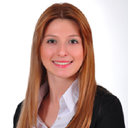Effects of Valsalva maneuver on QT dispersion in patients with ischemic heart diseases.
Кључне речи
Апстрактан
Previous studies showed that increased QT dispersion (QTd) has been observed during episodes of myocardial ischemia or infarction and identify the patients at risk of arrhythmia or sudden death. The objective of this study is to investigate the relationship between coronary artery disease and QTd during the Valsalva maneuver. The study population included 85 subjects (21 with normal coronary arteries, 35 with stable angina pectoris, and 29 with unstable angina pectoris). Twelve-lead surface ECGs were recorded at 50-mm/sec paper speeds and were obtained before the Valsalva maneuver and during the strain phase. The results indicate a significant difference in mean time increase between the control group and the group with stable angina pectoris (mean difference = 16.10 milliseconds, p<0.000), and between the control group and the group with unstable angina pectoris (mean difference = 35.26 milliseconds, p<0.000). The mean difference in time between these groups was also compared (mean difference = 19.17 milliseconds), and was statistically significant (p<0.000). There are some conditions like constipation, severe coughing spells, nausea, vomiting, and carrying or lifting heavy objects that increase intrathoracic pressure and may increase QT dispersion. Therefore, all these conditions should be treated appropriately and carrying or lifting heavy objects is forbidden, especially in patients with coronary artery disease.


